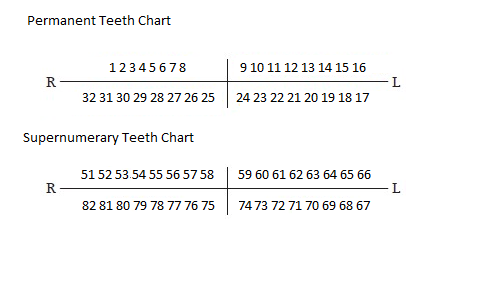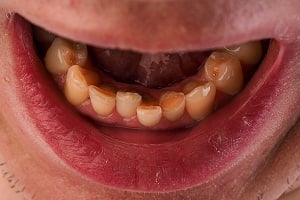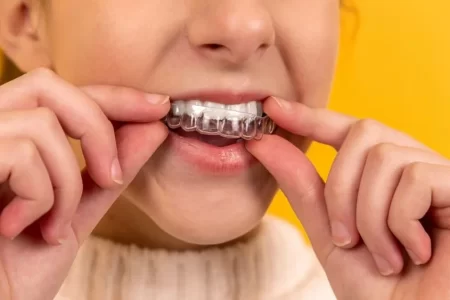What are Supernumerary Teeth?
Adults typically possess 32 permanent teeth, whereas children have 20 primary or “baby” teeth. However, in some uncommon cases, additional teeth might grow, a phenomenon termed hyperdontia. These additional teeth are referred to as supernumerary teeth.
These extra teeth are found in about 0.15% to 4% of people. While they can develop in anyone, they are more frequently observed in individuals with Gardner’s syndrome (a rare genetic condition), Down syndrome, or those born with a cleft lip. Notably, supernumerary teeth are twice as common in adult males compared to adult females.
Types:
Supernumerary teeth can emerge anywhere in the oral cavity, most commonly among the permanent teeth. While they can appear among primary teeth, they’re harder to spot since they often resemble other teeth in terms of eruption, shape, and alignment. Usually, a dental examination or an X-ray will help identify them.
Most of the time, there’s only one extra tooth, but occasionally, multiple supernumerary teeth might emerge, either individually or in clusters. In some rare instances, up to 30 extra teeth have been observed.
Various types of supernumerary teeth include:
Conical: This is the predominant type found among permanent teeth. They possess a regular root and typically emerge near the central incisors, which they may displace.
Tuberculate: Barrel-shaped, these teeth are embedded within the gums. They possess irregular roots and rarely break through the gums. Typically located near the central incisors on the palate, they can hinder the eruption of adjacent teeth.
Supplemental: Commonly observed among baby teeth, they’re usually found near the lateral incisors and often erupt normally.
Molariform: These teeth, complete with a full root, resemble premolars and typically emerge adjacent to the molars.
How to Number Supernumerary Teeth
Some people may have extra teeth in their mouths. These are called supernumerary teeth. You can chart these supernumerary teeth in software (Dentrix) by following these steps.
For permanent teeth:
Add 50 to the closest standard tooth number. For example, a supernumerary tooth that is adjacent to tooth 12, would be entered as 62.
How to Number Supernumerary Teeth
Some people may have extra teeth in their mouths. These are called supernumerary teeth. You can chart these supernumerary teeth in software (Dentrix) by following these steps.
For permanent teeth:
Add 50 to the closest standard tooth number. For example, a supernumerary tooth that is adjacent to tooth 12, would be entered as 62.
For primary teeth:
Add the letter “S” following the closest standard tooth number. For example: AS
Supernumerary Teeth Chart
| Permanent Tooth # | Tooth # To Use For Permanent Supernumerary Teeth |
Primary Tooth # |
Tooth # To Use For Primary Supernumerary Teeth |
|---|---|---|---|
| 1 | 51 | A | AS |
| 2 | 52 | B | BS |
| 3 | 53 | C | CS |
| 4 | 54 | D | DS |
| 5 | 55 | E | ES |
| 6 | 56 | F | FS |
| 7 | 57 | G | GS |
| 8 | 58 | H | HS |
| 9 | 59 | I | IS |
| 10 | 60 | J | JS |
| 11 | 61 | K | KS |
| 12 | 62 | L | LS |
| 13 | 63 | M | MS |
| 14 | 64 | N | NS |
| 15 | 65 | O | OS |
| 16 | 66 | P | PS |
| 17 | 67 | Q | QS |
| 18 | 68 | R | RS |
| 19 | 69 | S | SS |
| 20 | 70 | T | TS |
| 21 | 71 | ||
| 22 | 72 | ||
| 23 | 73 | ||
| 24 | 74 | ||
| 25 | 75 | ||
| 26 | 76 | ||
| 27 | 77 | ||
| 28 | 78 | ||
| 29 | 79 | ||
| 30 | 80 | ||
| 31 | 81 | ||
| 32 | 82 |
Another easy method (example) of charting the supernumerary teeth in the four quadrants is presented below.

(Image Source: supernumeraryteeth.com)
- In the chart, each quadrant normally contains 8 teeth. Start the counting on the upper right quadrant from right toward left until the counting of 16 permanent teeth is completed.
- You should continue counting the lower teeth going left to right such as from 17 to 32. (32 is the total number of normal permanent teeth)
- For charting supernumerary teeth, add 50 to all those numbers.







